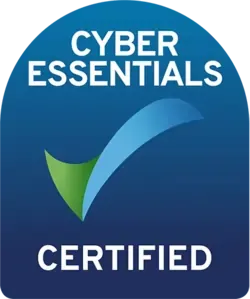 By: OpenKit on May 19 2025
By: OpenKit on May 19 2025 Powering the AI Future: Essential Open Source Tools for Generative AI Development
Explore the most powerful open source tools for building, evaluating, and deploying generative AI applications. Learn how OpenKit leverages KILN for rigorous AI evaluation and vLLM for efficient, private model inference that gives clients complete control.
Introduction: The Open Revolution in Generative AI
The generative AI landscape has undergone a significant transformation. Initially characterised by proprietary solutions and closed models from large tech companies, the field now sees a powerful counter-movement championing open-source solutions that has gained remarkable momentum. This shift is driven by more than just cost savings; it represents a fundamental move towards greater control, deeper customisation, and community-powered innovation.
At OpenKit, we’ve embraced this open-source revolution to develop cutting-edge AI solutions for our clients. With our focus on building intelligent, autonomous agents that streamline workflows across industries, we’ve carefully evaluated and selected the most effective open-source tools to power our development process 21.
The adoption of open-source tools in generative AI brings a multitude of benefits. Transparency and trust are paramount; open code allows developers and researchers to meticulously inspect model architectures and training methodologies, fostering a better understanding of how these complex systems operate and helping to identify potential biases or ethical concerns. This transparency is increasingly vital as AI systems are integrated into critical decision-making processes.
In this comprehensive guide, we’ll explore the essential open-source tools that power modern generative AI development. While we’ll provide a thorough overview of the entire ecosystem, we’ll give special attention to two tools we rely on heavily at OpenKit: KILN AI for rigorous model evaluation and vLLM for efficient inference in client deployments – ensuring both quality and performance while maintaining full control over data and models.
The Essential Toolkit: Categories of Open Source GenAI Tools
The open-source generative AI landscape can be organised into several key categories, each addressing different aspects of the development lifecycle:
1. Model Hubs & Development Frameworks
The Hugging Face Ecosystem – A Cornerstone for Open Source AI
At the epicentre of the open-source AI movement lies the Hugging Face ecosystem. It has evolved from a model repository into a comprehensive platform and vibrant community dedicated to democratising and advancing machine learning, particularly in the realm of Natural Language Processing (NLP) and generative AI 1.
Key Components of the Hugging Face Ecosystem:
- Hugging Face Hub: Often dubbed the “GitHub of machine learning,” the Hub hosts an extensive collection of over 350,000 pre-trained models (e.g., Llama, Mistral, Gemma), covering a vast array of tasks in NLP, computer vision, audio, and multimodal AI. It also provides access to over 75,000 datasets, crucial for training new models or fine-tuning existing ones.
- Spaces: This feature allows users to create and share interactive ML applications and demos, typically built with Gradio or Streamlit. Spaces are invaluable for showcasing model capabilities, gathering user feedback, and facilitating rapid prototyping.
- Libraries:
- 🤗 Transformers: This flagship library provides access to thousands of pre-trained models (like BERT, GPT, T5) with utilities to easily download, configure, and use them for inference or fine-tuning 2.
- 🤗 Tokenizers: A specialised library offering high-performance tokenisation, a critical preprocessing step for most NLP models.
- 🤗 Datasets: This library simplifies accessing, loading, and processing the vast array of datasets available on the Hub and elsewhere.
- 🤗 Accelerate: Designed to simplify running PyTorch training scripts across various distributed computing setups and enables Big Model Inference for models too large to fit on a single GPU.
- Open LLM Leaderboard: This community resource tracks, ranks, and evaluates open-source LLMs and chatbots across benchmarks like ARC, HellaSwag, MMLU, TruthfulQA, and Winogrande, providing an objective comparison of open LLMs 3, 4.
OpenKit Insight: At OpenKit, the Hugging Face Hub serves as our primary source for foundation models, which we then adapt to specific client needs. We regularly use the Transformers library for model fine-tuning and inference in the early stages of development.
Application Frameworks for Building LLM-Powered Systems
Several frameworks have emerged to simplify the process of building applications around LLMs:
LangChain has rapidly emerged as a prominent open-source framework for developing applications powered by LLMs. Its core philosophy revolves around composability, allowing developers to chain together various components to create sophisticated workflows 5.
Core Components of LangChain:
- Models: Provides a standardised interface to interact with a multitude of LLMs.
- Prompts: Includes utilities for constructing, managing, and optimising prompts.
- Chains: Sequences of calls to LLMs, utilities, or other chains, allowing for multi-step processes.
- Indexes: Facilitate the structuring of data so that LLMs can effectively use it (especially for RAG).
- Memory: Enables LLMs to retain information from previous interactions.
- Agents: Empowers LLMs to make decisions and take actions using tools like search engines or APIs.
- Callbacks: A system for logging, monitoring, and streaming intermediate steps.
LlamaIndex is another powerful open-source framework, but with a more specific focus: it is a data framework designed explicitly for building context-augmented LLM applications, with a strong emphasis on Retrieval Augmented Generation (RAG) 6.
Core Components of LlamaIndex:
- Data Connectors (LlamaHub): A rich collection of connectors to ingest data from various sources (APIs, PDFs, SQL databases).
- Data Indexes: Tools to structure ingested data (e.g., vector stores) into representations optimised for LLM consumption.
- Engines (Query & Chat): Interfaces for question-answering and conversational interactions with your data.
- Agents: LLM-powered knowledge workers that can use tools, including RAG pipelines, to perform tasks.
- Workflows: Multi-step, event-driven processes combining various components for complex applications.
| Feature Focus | LangChain | LlamaIndex |
|---|---|---|
| Primary Goal | General LLM application development | Building RAG & data-connected LLM apps |
| Key Strength | Versatility, complex agentic workflows | Data ingestion, indexing, retrieval for RAG |
| Data Handling | Supports data connection, more general | Specialised for connecting LLMs to custom data |
| Common Use Cases | Chatbots, summarisation, complex agents | Q&A over documents, knowledge bases, RAG |
| Table 1: LangChain vs. LlamaIndex at a Glance 22 |
OpenKit’s Framework Approach: While many developers rely heavily on LangChain, at OpenKit we primarily build custom architectures tailored to each client’s specific requirements. We occasionally use LlamaIndex for certain RAG applications where its data connectors and indexing capabilities offer efficiency advantages, but we often prefer purpose-built solutions that give us complete control over every aspect of the application flow for enterprise needs.
2. Evaluation Suites – Ensuring Quality and Reliability
The power of generative AI is undeniable, but ensuring accuracy, safety, reliability, and alignment with user expectations is paramount. Without systematic evaluation, it’s impossible to objectively measure performance or identify areas for improvement 7.
KILN AI Eval Framework – Our Primary Evaluation Tool
KILN AI is an accessible tool designed to simplify various stages of the LLM lifecycle, including fine-tuning, synthetic data generation, and crucially, model and task evaluation 20.
Core Evaluation Functionalities of KILN AI:
- Quality Assessment: Evaluates models and tasks using a suite of evaluators.
- Team Collaboration: Facilitates collaboration among team members on datasets, ratings, and results.
- Integrated Workflow: Seamlessly integrates evaluation with fine-tuning and synthetic data generation capabilities.
Key Evaluation Metrics & Methodologies in KILN AI 8:
| Metric/Methodology | Description |
|---|---|
| Correlation Scores | Kendall Tau, Spearman, Pearson: Measure alignment of automated evals with human ratings. |
| Error Metrics | MAE, MSE (and normalised versions): Quantify deviation from ground truth. |
| Task-Specific Scores | Custom metrics (e.g., 1-5 stars, pass/fail) tailored to specific tasks. |
| LLM as Judge | Uses another LLM to evaluate outputs based on a defined rubric. |
| G-Eval | An advanced “LLM as Judge” using token probabilities for more nuanced scoring. |
| Golden Dataset Comparison | Benchmarks automated methods against expert-rated examples. |
| Table 2: Key Evaluation Metrics & Methodologies in KILN AI |
OpenKit Insight: KILN AI Evals is our primary evaluation framework at OpenKit. We particularly value its ability to correlate automated evaluations with human judgment, which is crucial for maintaining the high quality standards our clients expect. For critical projects, we create “golden datasets” meticulously rated by domain experts, which serve as the gold standard for our automated evaluation pipelines.
Other Notable Evaluation Tools
The open-source ecosystem offers various other frameworks for LLM evaluation, each with unique strengths 9, 10:
- DeepEval: A Python-native framework (“Pytest for LLMs”) with 14+ metrics for summarisation, hallucination, etc.
- RAGAs: Specialised for RAG pipelines, with metrics like Faithfulness and Contextual Precision.
- Promptfoo: CLI tool for systematic prompt testing, evaluation, and comparison.
- LangSmith (by LangChain): Observability and evaluation platform, good for bias and safety testing.
- Arize Phoenix: An open-source LLM observability tool with evaluation for Q&A accuracy and hallucination.
- Langfuse: Full-stack open-source LLM engineering platform (tracing, evaluation, prompt management).
- OpenAI Evals: Primarily for evaluating OpenAI models, supporting dataset-driven testing.
3. Inference & Serving Engines – Bringing Models to Life
Deploying models efficiently is crucial for delivering value. These tools excel at high-performance serving and local LLM deployment.
vLLM – High-Performance Serving for Enterprise Deployment
vLLM is an open-source library engineered for fast and memory-efficient Large Language Model (LLM) inference and serving. Its primary design goal is to maximise throughput and minimise latency when serving LLMs, particularly in scenarios with high concurrency 11, 12.
Core Concepts and Innovations:
- PagedAttention: vLLM’s flagship innovation, inspired by OS virtual memory paging:
- Divides the KV cache (attention keys and values) into non-contiguous blocks (“pages”) 13.
- Virtually eliminates memory fragmentation, reducing waste significantly (often from 60-80% in traditional systems to under 4%) 14.
- Enables larger batch sizes, longer context windows, and efficient memory sharing (e.g., for parallel sampling or shared prefixes) 14.
- Continuous Batching: Instead of waiting for a full batch, vLLM processes requests dynamically as they arrive, adding them to the current batch. This maximises GPU utilisation and reduces average latency 12.
- Optimised CUDA Kernels: Leverages hand-tuned CUDA kernels for critical operations, further boosting performance on NVIDIA GPUs 12.
- Broad Model & Feature Support: Compatible with many Hugging Face models (Llama, Gemma, Phi, Qwen, Mistral, etc.), supports tensor parallelism, various quantisation methods (GPTQ, AWQ, FP8), speculative decoding, and an OpenAI-compatible API server 11.
OpenKit Insight: vLLM is our preferred inference engine for production deployments. Its exceptional performance characteristics and memory efficiency allow us to serve multiple clients efficiently while maintaining responsive AI systems. We typically deploy vLLM within containerised environments that can be hosted on client infrastructure or on secure cloud instances, ensuring data never leaves controlled environments.
For our legal document analysis platform BAiSICS, vLLM’s ability to handle long contexts efficiently has proven invaluable when processing complex legal documents that often exceed 50 pages.
llama.cpp – Efficient Local Inference
llama.cpp has become a cornerstone of the local LLM movement. It’s a C/C++ library designed for running LLMs with minimal setup, few dependencies, and outstanding performance across a diverse range of hardware 15.
Key Features:
- GGUF Format: A binary format designed for rapid loading and efficient storage of models, supporting various quantisation schemes.
- Quantisation: Extensive support for model quantisation (e.g., 2-bit to 8-bit integer quantisation, “k-quants”), dramatically reducing model size and memory requirements, enabling large models to run on consumer hardware.
- Broad Hardware Support: Runs on diverse hardware including Apple Silicon (Metal), NVIDIA GPUs (CUDA), AMD GPUs (HIP), and offers highly optimised CPU execution (AVX, AVX2, AVX512).
- CPU+GPU Hybrid Inference: Can offload parts of models to a GPU and run the remaining layers on the CPU, useful for models exceeding VRAM.
- Minimal Dependencies: Plain C/C++ implementation avoids complex dependency webs.
- OpenAI-Compatible Server: Includes
llama-serverwhich provides an HTTP server with an API compatible with OpenAI specifications.
NVIDIA TensorRT-LLM: While not fully open source in the same vein as llama.cpp, TensorRT-LLM is an NVIDIA-optimised open-source library for defining, optimising, and executing LLMs on NVIDIA GPUs with extreme performance. It includes advanced optimisations like INT4/INT8 quantisation, in-flight batching, and custom CUDA kernels 23.
4. Local Deployment UIs & Toolkits – User-Friendly Interfaces
While command-line tools provide power and flexibility, user interfaces simplify running and managing LLMs locally. These tools often leverage backends like llama.cpp or Ollama. The vibrant community around local LLMs has spurred the development of many such user-friendly interfaces 24.
| Tool | Key Features | Primary Backend(s) Leveraged | Target User |
|---|---|---|---|
| LM Studio | Desktop app (Win/Mac/Lin), easy model discovery (GGUF, MLX), chat UI, local server, RAG 17. | llama.cpp (for GGUF) | Beginners, quick experimenters |
| Oobabooga Text Generation WebUI | Gradio web UI, multi-backend (llama.cpp, Transformers), advanced parameters, chat modes, extensions 18. | llama.cpp, Transformers, ExLlamaV2 | Experimenters, advanced users |
| Ollama | Lightweight server & CLI, Modelfile for customisation, OpenAI API 16. | llama.cpp | Developers, local serving |
| Open WebUI | Popular frontend, often paired with Ollama for a user-friendly chat experience. | Ollama, other API-compatible engines | Users wanting a good chat interface |
| KoboldCPP | llama.cpp-based UI focused on creative writing, roleplay, and story generation 24. | llama.cpp | Creative writers, roleplayers |
| SillyTavern | Character-focused chat UI, connects to various backends (KoboldCPP, Oobabooga API, OpenAI API) 24. | Various (via API) | Character interaction, roleplay |
| Klee (by KleeLLM) | Desktop app bundling Ollama and LlamaIndex for RAG and note-taking 25. | Ollama, LlamaIndex | Users needing local RAG |
| Table 3: Popular Local LLM User Interfaces and Toolkits |
OpenKit Insight: While our production systems typically use vLLM, we find tools like llama.cpp (often via LM Studio or Oobabooga’s Text Generation WebUI) invaluable during development and testing. This approach allows us to quickly validate concepts and model performance on local hardware before scaling up to production-grade deployments with vLLM.
5. MLOps for Generative AI – Streamlining Workflows
Successfully leveraging generative AI in production extends beyond individual tool proficiency to systematic MLOps (Machine Learning Operations) practices for managing the entire lifecycle. This is often referred to as LLMOps when specific to Large Language Models 19.
Key MLOps Components for GenAI:
- Data Management & Versioning: Crucial for training datasets, fine-tuning data, prompt engineering assets, and RAG knowledge bases. Tools like DVC (Data Version Control) help manage and version large datasets alongside code.
- Experiment Tracking: Logging prompts, model configurations, hyperparameters, evaluation metrics, and outputs is essential for reproducibility and comparative analysis. Platforms like MLflow and Weights & Biases offer components that integrate well with open-source workflows.
- Model Registries: Storing, versioning, and managing trained or fine-tuned models, along with their metadata and lineage. The Hugging Face Hub serves as a de facto public model registry, while tools like MLflow provide private registry capabilities.
- Automated Pipelines: Creating reproducible workflows for data preprocessing, model training/fine-tuning, evaluation, and deployment. Orchestration tools like Kubeflow and Apache Airflow can manage these complex pipelines.
- Monitoring: Continuously tracking model performance (accuracy, drift), data drift, output quality (e.g., toxicity, relevance), and operational health (latency, throughput, cost) in production environments.
Deep Dive: How OpenKit Uses KILN AI for Model Evaluation
At OpenKit, ensuring the quality, reliability, and ethical alignment of our AI solutions is paramount. Our evaluation process using KILN AI typically follows these steps:
1. Creating Comprehensive Evaluation Datasets
We develop test sets that cover the full range of expected inputs and edge cases for each client’s specific use case. For legal document analysis, this includes:
- Different document types (leases, contracts, legal opinions)
- Various document qualities (clean PDFs, scanned documents)
- Range of complexity levels and potential ambiguities
2. Establishing “Golden Datasets” with Expert Ratings
For critical applications, we create “golden datasets” with examples meticulously rated by human subject matter experts (SMEs):
- Legal professionals rate document summaries for accuracy and completeness.
- Domain experts evaluate factual correctness in specialised fields.
- Client stakeholders assess alignment with business requirements. By comparing how different automated evaluators in KILN score this golden set, we determine which automated method best correlates with human judgment 8.
3. Designing Custom Evaluation Criteria
KILN AI allows us to create our own evaluation configurations with custom goals, rubrics, and scoring mechanisms. For our BAiSICS legal platform, we developed specialised evaluations for:
- Legal Accuracy: Assessing correctness of extracted legal information.
- Comprehensive Coverage: Ensuring all relevant sections are analysed.
- Citation Quality: Verifying accurate references to source material.
- Contextual Understanding: Evaluating comprehension of legal context.
4. Implementing Continuous Improvement Cycles
Evaluation results feed directly into our development workflow:
- Failures and edge cases inform new training or fine-tuning examples.
- Successful patterns are reinforced.
- Confidence thresholds for AI outputs are calibrated based on evaluation results.
- Regular re-evaluation ensures continued performance as data and requirements evolve.
Case Study: Pubs Advisory Service For Pubs Advisory Service, we applied KILN AI to evaluate our lease agreement analysis solution:
- Created a golden dataset of 50 diverse lease agreements with expert annotations.
- Established correlation with human judgments using Kendall Tau (achieving 0.87 correlation) 8.
- Continuously monitored for edge cases and factual accuracy using automated KILN evals.
- Regular re-validation ensured consistent performance across new document types.
Powering Efficiency: vLLM in OpenKit’s Production Stack
For production deployment, we prioritise both performance and privacy. vLLM serves as the backbone of our inference infrastructure.
Enterprise-Grade Deployment Architecture
Our typical vLLM implementation includes:
- Infrastructure Setup:
- Containerised deployment (e.g., Docker, Kubernetes) for consistency and scalability.
- GPU resource allocation optimised for specific model sizes and expected load.
- Scalable architecture supporting both vertical (more powerful instances) and horizontal (more instances) scaling.
- Security-First Design:
- Deployment on client-controlled infrastructure or secure private cloud instances (e.g., AWS, Azure, GCP).
- End-to-end encryption for data in transit (TLS/SSL) and at rest.
- Robust role-based access controls (RBAC) and comprehensive audit logging.
- Compliance with relevant data protection regulations (e.g., GDPR, CCPA).
- Integration Layer:
- Custom API gateway tailored to client workflows and existing enterprise systems.
- Authentication (e.g., OAuth 2.0, API keys) and authorisation mechanisms.
- Input validation, sanitisation, and preprocessing pipelines.
- Response post-processing, formatting, and caching strategies.
- Operational Excellence:
- Comprehensive monitoring of key performance indicators (KPIs): latency, throughput, error rates, GPU utilisation.
- Automated scaling policies based on real-time demand patterns.
- Health checks and automated fallback mechanisms for system resilience.
- Regular performance benchmarking and optimisation of deployed models and infrastructure.
Client Spotlight: Legal Document Analysis (BAiSICS Platform) “OpenKit provided us with a robust and innovative back-office tool to tackle the wide range of commercial agreements we need to examine. Their deep understanding of our business needs, coupled with their expertise in GPT and Cloud (AWS) services, enabled them to swiftly navigate complexities and deliver a bespoke AI solution tailored to our operations… The engagement was efficient and inspired confidence from top to bottom.”
— Feedback from a valued OpenKit client in the legal sector.
Performance Optimisations for Legal Document Processing
For our legal document analysis solutions, such as the BAiSICS platform, we’ve implemented several vLLM-specific optimisations:
- Context Length Management:
- Advanced chunking strategies tailored for long and dense legal documents, respecting semantic boundaries.
- Dynamic batch sizing based on token count and document complexity to maximise GPU utilisation.
- Intelligent token budgeting per request to handle variable document lengths efficiently.
- Memory Optimisation:
- Full leverage of PagedAttention for optimal KV cache management with long legal texts 13, 14.
- Continuous batching to ensure high throughput even with varying request loads from multiple analysts 12.
- Careful selection of model quantisation (e.g., AWQ, GPTQ where applicable and supported by vLLM 11) to balance document comprehension quality with inference speed and memory footprint.
- Specialised Processing Pipelines:
- Pre-processing workflows optimised for cleaning and structuring text from scanned legal documents (PDFs, OCR outputs).
- Custom prompt templates engineered for different legal clauses and document types (e.g., contracts, case law, statutes).
- Response formatting tailored to legal information extraction, summarisation, and comparison tasks.
These optimisations using vLLM have yielded impressive results for our clients:
- Document processing times significantly reduced, in some cases by over 75% compared to previous methods.
- Efficient handling of complex legal documents often exceeding 50-100 pages.
- Capability to support concurrent analysis of multiple documents by teams of legal professionals.
- Consistently low-latency responses for interactive querying and analysis of document contents.
Best Practices for Implementing Open Source GenAI Tools
Based on our experience implementing these tools for enterprise clients, we’ve developed several best practices:
1. Establish Clear Evaluation Metrics Early
Define success metrics at the project outset. These should align with business objectives rather than just technical benchmarks. For legal document analysis, for example, metrics might include:
- Accuracy of extracted terms (e.g., F1 score for named entity recognition).
- Completeness and factual consistency of summaries (e.g., ROUGE, BERTScore, human review).
- Speed improvement over manual review (e.g., time saved per document).
- Correlation with expert human assessment (using KILN AI’s methodologies 8).
2. Design for Data Privacy and Security from the Start
When working with sensitive information, especially in sectors like legal, finance, or healthcare:
- Deploy inference engines (like vLLM) on private infrastructure (on-premise or secure private cloud).
- Ensure data does not leave client-controlled environments during any stage, including evaluation.
- Implement fine-grained access controls, end-to-end encryption, and regular security audits.
- Establish clear data governance, retention, and deletion policies compliant with regulations.
3. Combine Multiple Tools for Comprehensive Solutions
No single tool addresses all needs. Our most successful implementations often create a tailored stack:
- Hugging Face Hub: For sourcing and initially experimenting with foundation models.
- KILN AI Eval Framework: For rigorous, ongoing evaluation of model outputs and prompt effectiveness.
- Custom Architecture or LlamaIndex (selectively): For efficient data ingestion and retrieval in RAG applications.
- vLLM or llama.cpp: For optimised inference, choosing vLLM for scalable production and llama.cpp for local/edge or CPU-bound scenarios.
- MLOps tools (MLflow, DVC): For experiment tracking, data versioning, and pipeline orchestration.
4. Implement Continuous Evaluation Throughout the Lifecycle
Evaluation isn’t a one-time activity. We integrate KILN AI evaluations (or similar frameworks) throughout the development process 7, 8:
- During initial model selection and benchmarking.
- Throughout prompt engineering and fine-tuning iterations.
- In pre-production validation against “golden datasets”.
- As part of ongoing monitoring in production to detect drift or degradation.
5. Leverage Community Knowledge and Stay Updated
The open-source AI space evolves rapidly:
- Actively monitor repositories and communities (e.g., Hugging Face forums, GitHub discussions for key tools) for updates, best practices, and emerging techniques.
- Engage with research papers that often introduce or validate new tools and methodologies (e.g., those found on arXiv).
- Encourage internal knowledge sharing and experimentation within your team.
Conclusion: The Power of Open Source in Enterprise AI
The open-source generative AI ecosystem has matured rapidly, offering robust tools that rival—and in some cases surpass—their proprietary counterparts in performance, flexibility, and transparency. At OpenKit, we’ve embraced this evolution, focusing particularly on best-in-class tools like KILN AI for evaluation and vLLM for inference to deliver solutions that combine state-of-the-art technology with practical business value.
The advantages of this open-source-centric approach for enterprises are clear:
- Greater control over data privacy, model behaviour, and infrastructure choices.
- Enhanced customisation to tailor AI solutions precisely to specific business domains and workflows.
- Reduced vendor lock-in risk and greater long-term strategic flexibility.
- Improved transparency and auditability, which is crucial for regulated industries and building trust.
- Significant cost efficiency in many cases, without compromising on the quality or sophistication of the AI solution.
The future of enterprise AI lies in strategically harnessing these powerful open-source tools while adding the critical layers of domain expertise, rigorous evaluation, robust security, and seamless integration needed for business-critical applications. At OpenKit, we’re proud to be at the forefront of this approach, helping organisations realise the full potential of generative AI through the thoughtful and expert application of open-source technology.
If you’re looking to explore how these tools could transform your business processes, get in touch with our team to discuss your specific needs.
Ready to harness the power of open source generative AI for your organisation? OpenKit specialises in building bespoke AI solutions leveraging cutting-edge open source tools with enterprise-grade security and performance.
Discover Our AI Services | Contact Us to Discuss Your Project
References
- Hugging Face Transformers Introduction - GeeksforGeeks. Accessed May 2025.
- Hugging Face Transformers Documentation - Hugging Face. Accessed May 2025.
- Open LLM Leaderboard Collection - Hugging Face. Accessed May 2025.
- Open LLM Leaderboard Main Space - Hugging Face. Accessed May 2025.
- What Is LangChain and How to Use It - Edureka. Accessed May 2025.
- LlamaIndex Documentation - LlamaIndex Team. Accessed May 2025.
- Building an LLM evaluation framework: best practices - Datadog. Accessed May 2025.
- Kiln AI Evaluations Documentation - Kiln AI. Accessed May 2025.
- Top 6 Open-Source Frameworks for Evaluating Large Language Models - Athina AI Hub. Accessed May 2025.
- LLM Evaluation Frameworks: Head-to-Head Comparison - Comet ML. Accessed May 2025.
- vLLM Official Documentation - vLLM Project. Accessed May 2025.
- What is vLLM? How to Install and Use vLLM, Explained - Apidog Blog. Accessed May 2025.
- vLLM Paged Attention Kernel Design - vLLM Project. Accessed May 2025.
- Introduction to vLLM and PagedAttention - RunPod Blog. Accessed May 2025.
- llama.cpp GitHub Repository - Georgi Gerganov. Accessed May 2025.
- LLM Serving Frameworks Overview (Ollama, vLLM, SGLang, LLaMA.cpp Server) - Hyperbolic Blog. Accessed May 2025.
- LM Studio Official Website - LM Studio. Accessed May 2025.
- Oobabooga Text Generation WebUI GitHub - oobabooga. Accessed May 2025.
- LLMOps workflows on Databricks - Databricks Documentation. Accessed May 2025.
- Kiln AI GitHub Repository - Kiln AI. Accessed May 2025.
- OpenKit AI Development Services - OpenKit Ltd. Accessed May 2025.
- Llamaindex vs Langchain: What’s the difference? - IBM Blog. Accessed May 2025.
- NVIDIA TensorRT-LLM - NVIDIA Developer. Accessed May 2025.
- Reddit r/LocalLLaMA community discussions (General tool mentions based on search result snippets from sources like reddit.com/r/LocalLLM). Accessed May 2025.
- Reddit r/selfhosted post: “I built and open sourced a desktop app to run LLMs locally with built-in RAG knowledge base and note-taking capabilities” (Introduces Klee). Accessed May 2025.






